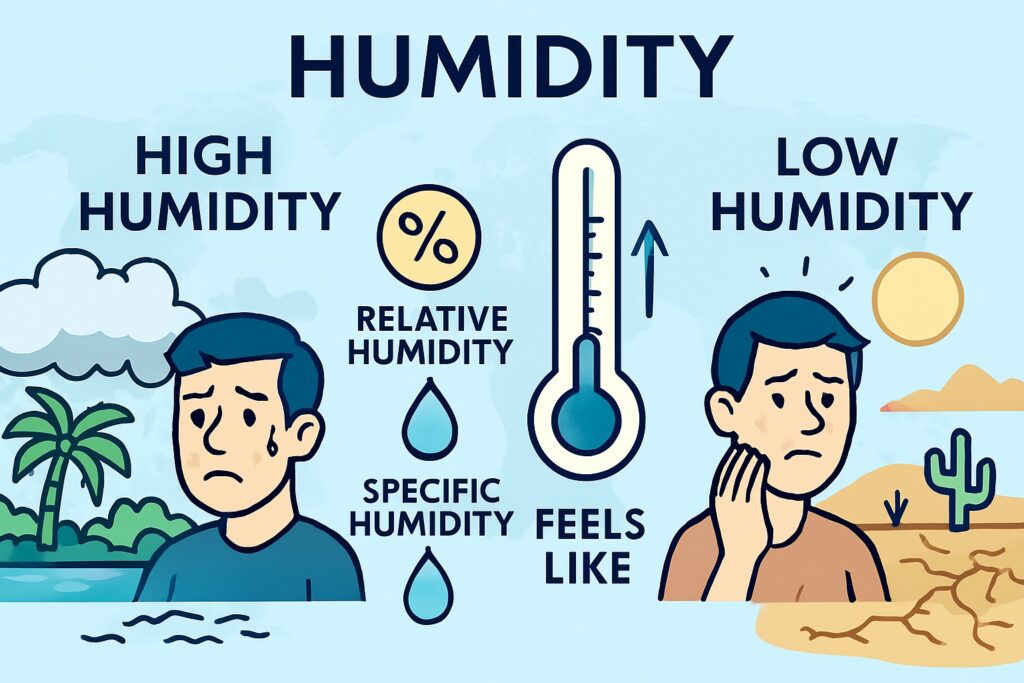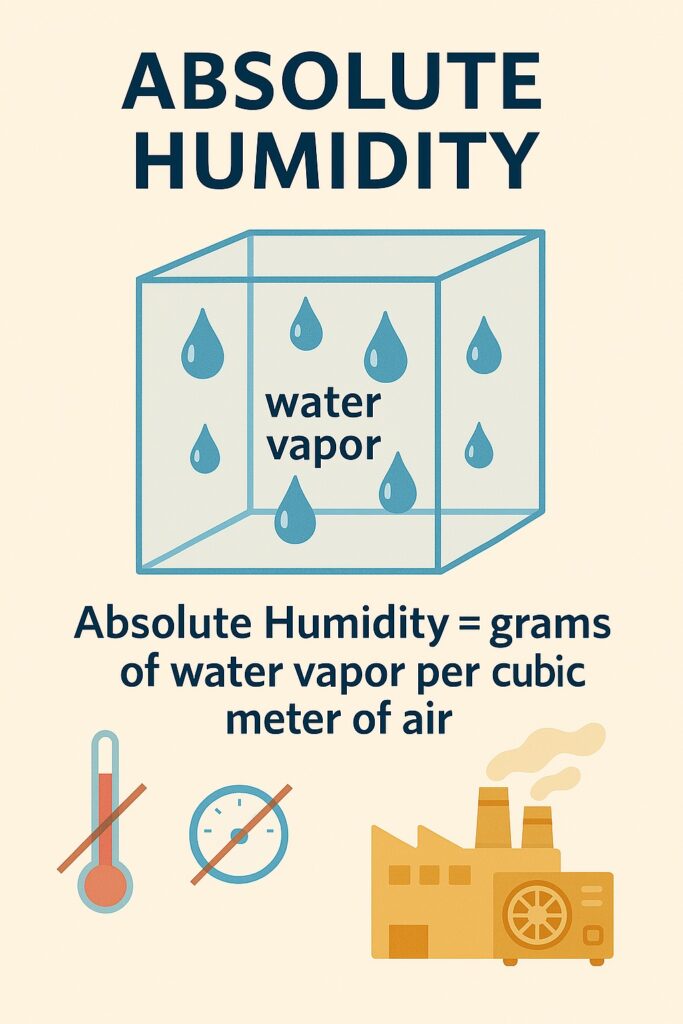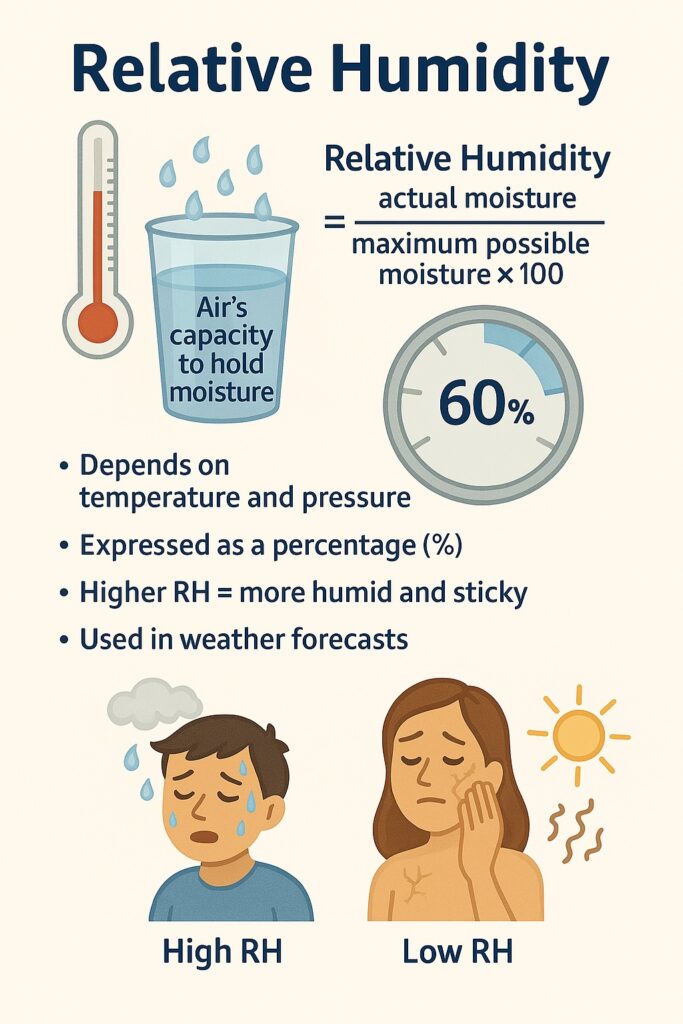Humidity refers to the amount of water vapor present in the air, absolute humidity and relative humidity are two types of measurement of humidity. While they are both measures of atmospheric moisture, they differ in how they are measured and expressed. In this article, we will explore the differences between absolute humidity and relative humidity and how they relate to one another.

Table of Contents
What is Absolute humidity?
Absolute humidity refers to the actual amount of moisture in the air, expressed in terms of grams of water vapor per cubic meter of air. It is a measure of the actual water content of the air, regardless of the air’s temperature or pressure. Absolute humidity is typically used in industrial applications, such as in the design of HVAC systems or in the measurement of moisture content in materials.

What is Relative humidity?
Relative humidity, on the other hand, is a measure of how much moisture the air can hold at a given temperature and pressure, expressed as a percentage. It is the ratio of the amount of water vapor in the air to the maximum amount of water vapor the air can hold at that temperature and pressure. Relative humidity is commonly used in weather forecasting, as it is a good indicator of how comfortable the air will feel to humans.

Difference Between Absolute and Relative Humidity
To understand the difference between absolute and relative humidity, consider the following example. If a room contains 10 grams of water vapor per cubic meter of air and can hold a maximum of 20 grams of water vapor per cubic meter of air at a given temperature and pressure, the relative humidity would be 50%. However, if the same room is heated, its absolute humidity would remain the same, but its relative humidity would decrease, as the warmer air can hold more moisture.

In general, relative humidity is more useful than absolute humidity for understanding how comfortable the air will feel to humans. High relative humidity can make the air feel muggy and uncomfortable, while low relative humidity can cause dry skin, chapped lips, and other health problems. However, absolute humidity is important in industrial and scientific applications, as it directly relates to the amount of moisture in materials and the efficiency of HVAC systems.
| Parameter | Absolute Humidity | Relative Humidity |
|---|---|---|
| Definition | Actual amount of moisture in the air, expressed in grams of water vapor per cubic meter of air | The ratio of the amount of water vapor in the air to the maximum amount of water vapor the air can hold at a given temperature and pressure, expressed as a percentage |
| Units | Grams of water vapor per cubic meter (g/m3) | Percentage (%) |
| Relationship to Temperature and Pressure | Absolute humidity is independent of temperature and pressure | Relative humidity decreases as temperature increases (assuming constant moisture content) and increases as pressure decreases |
| Application | Used in industrial applications and measurement of moisture content in materials | Used in weather forecasting and as an indicator of comfort levels for humans |
| Comfort levels | Not directly related to comfort levels | High relative humidity can cause discomfort and low relative humidity can cause dry skin and other health problems |
| Importance in HVAC | Important in determining the efficiency of HVAC systems | Not directly related to the efficiency of HVAC systems |
What is Specific Humidity?
Specific Humidity is the mass of water vapor present in a unit mass of moist air (including both dry air and water vapor). It is usually expressed in grams of water vapor per kilogram of air (g/kg).

Specific Humidity = (Mass of water vapor) / (Total mass of air)
-
It tells us how much actual water vapor is in the air, regardless of temperature.
-
It does not change as air rises or falls in the atmosphere unless moisture is added or removed.
-
It is a more accurate measure of atmospheric moisture than relative humidity when comparing different altitudes or regions.
Read: Geography Notes